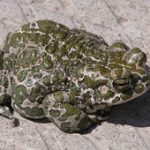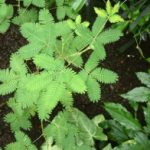2.1 Properties of Life
Learning Objectives
By the end of this section, you will be able to:
- Describe characteristics that can be used to determine if something is living.
All groups of living organisms share several key characteristics or functions:
- Cells / Order
- Sensitivity or response to stimuli
- Reproduction
- Evolution and Adaptation
- Growth and development
- Regulation
- Homeostasis
- Metabolism (Energy Processing)
When viewed together, these eight characteristics serve to define life. Let’s examine what each of these characteristics means to in a scientific sense.
Cells / Order
Organisms, in the most basic form, consist of highly organized structures that are made up of one or more cells. Even very simple, single-celled organisms are remarkably complex. Inside each cell, atoms make up molecules. These in turn make up cell components or organelles. Multicellular organisms, which may consist of millions of individual cells, have an advantage over single-celled organisms in that their cells can be specialized to perform specific functions.

Sensitivity or Response to Stimuli
Organisms respond to diverse signals from the environment (stimuli). For example, plants can bend toward a source of light or respond to touch. Even tiny bacteria can move toward or away from chemicals (a process called chemotaxis) or light (phototaxis). Movement toward a stimulus is considered a positive response, while movement away from a stimulus is considered a negative response.

Concept in Action
Watch this video to see how the sensitive plant responds to a touch stimulus.
Reproduction
Single-celled organisms reproduce by duplicating their DNA (deoxyribonucleic acid, the genetic material) and then dividing it equally as the cell prepares to divide to form two new cells.
Many multicellular organisms produce specialized reproductive cells that will form new individuals. When reproduction occurs, DNA is passed along to an organism’s offspring. Genes, made up of DNA, are the basic units by which traits are passed from parent to offspring. DNA, and the information that it encodes in genes, is the reason that offspring will belong to the same species as parents and will have similar characteristics.
Evolution and Adaptation
All living organisms exhibit a “fit” to their environment. Biologists refer to this fit as adaptation and it is a consequence of evolution by natural selection, which operates in every lineage of reproducing organisms. Examples of adaptations are diverse and unique, from heat-resistant archaea that live in boiling hot springs to the tongue length of a nectar-feeding moth that matches the size of the flower from which it feeds. All adaptations enhance the reproductive potential of the individual exhibiting them, including their ability to survive to reproduce. Adaptations are not constant. As an environment changes, natural selection causes the characteristics of the individuals in a population to track those changes.
NOTE: “Adaptation” in a biological concept is used differently from how you might use it in normal conversation. Adaptations are changes that occur in the characteristics of an organism due to evolution. These changes take place over many generations and are (mainly) due to changes in the DNA of the organism. An example of an adaptation that your dog has would be that it sheds its winter coat as the weather starts to get warmer because this is a characteristic that has been developed over many generations. An example of something that is NOT an adaptation would be that your dog has “adapted” to living in your house by learning to live with your cat.
Growth and Development
Organisms grow (get larger) and develop (change over their lifespan) according to specific instructions coded for by their genes. These genes provide instructions that will direct cellular growth and development, ensuring that a species’ young will grow up to exhibit many of the same characteristics as its parents.

Regulation
Even the smallest organisms are complex and require multiple regulatory mechanisms to coordinate internal functions, such as the transport of nutrients, response to stimuli, and coping with environmental stresses. For example, organ systems such as the digestive or circulatory systems perform specific functions like carrying oxygen throughout the body, removing wastes, delivering nutrients to every cell, and cooling the body.
Homeostasis
To function properly, cells require appropriate conditions such as proper temperature, pH, and concentrations of diverse chemicals. These conditions may, however, change from one moment to the next. Organisms are able to maintain internal conditions within a narrow range almost constantly, despite environmental changes, through a process called homeostasis or “steady state”—the ability of an organism to maintain constant internal conditions. For example, many organisms regulate their body temperature in a process known as thermoregulation. Organisms that live in cold climates, such as the polar bear, have body structures that help them withstand low temperatures and conserve body heat. In hot climates, organisms have methods (such as perspiration in humans or panting in dogs) that help them to shed excess body heat.

Metabolism (Energy Processing)
Metabolism means taking in and using energy. All organisms use a source of energy for their metabolic activities. Some organisms capture energy from the Sun and convert it into chemical energy in food; others use chemical energy from molecules they take in.

Glossary
adaptation: the process by which a species becomes fitted to its environment
archaea: a domain of single-celled organisms that are distinct from bacteria, often found in extreme environments and characterized by unique genetic and biochemical features
develop: change over their lifespan
encode: to convert (something, such as a body of information) from one system of communication into another
grow: get larger
homeostasis: the ability of an organism to maintain constant internal conditions
metabolism: taking in and using energy
offspring: the young created by living organisms through sexual or asexual reproduction
organelles: small structures that exist within cells and perform specialized functions
reproduce: to produce new individuals of the same kind, whether through a sexual or asexual process; to create offspring
stimulus (plural stimuli): diverse signals from the environment that cause a reponse in a living organism
chemotaxis: the movement of an organism or cell toward or away from a chemical stimulus
phototaxis: the movement of an organism or cell toward or away from light
References
Biology and the Citizen (2023) Copyright © 2022 by Utah State University is licensed under a Creative Commons Attribution 4.0 International License, except where otherwise noted.

